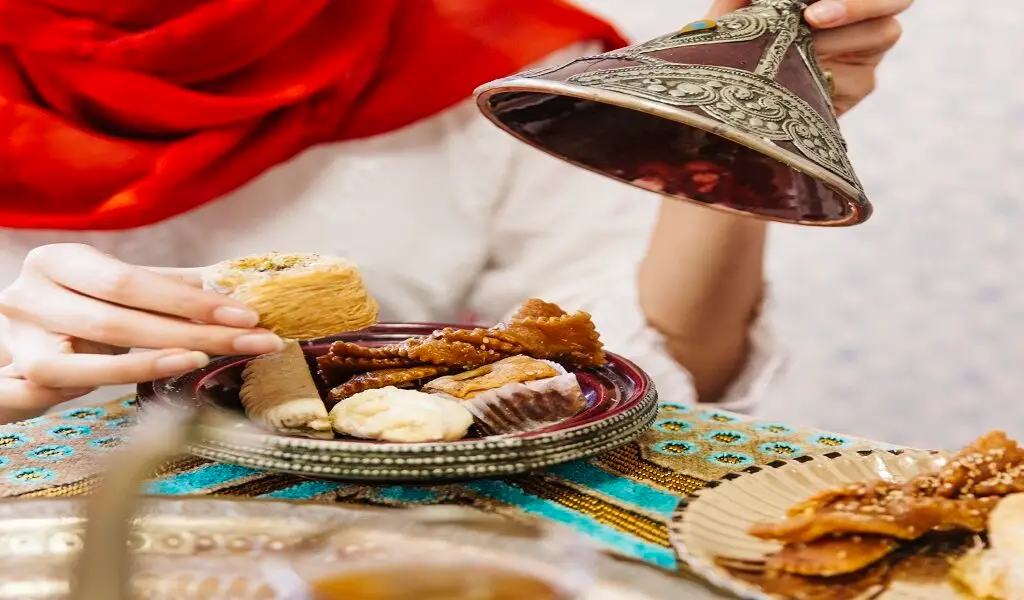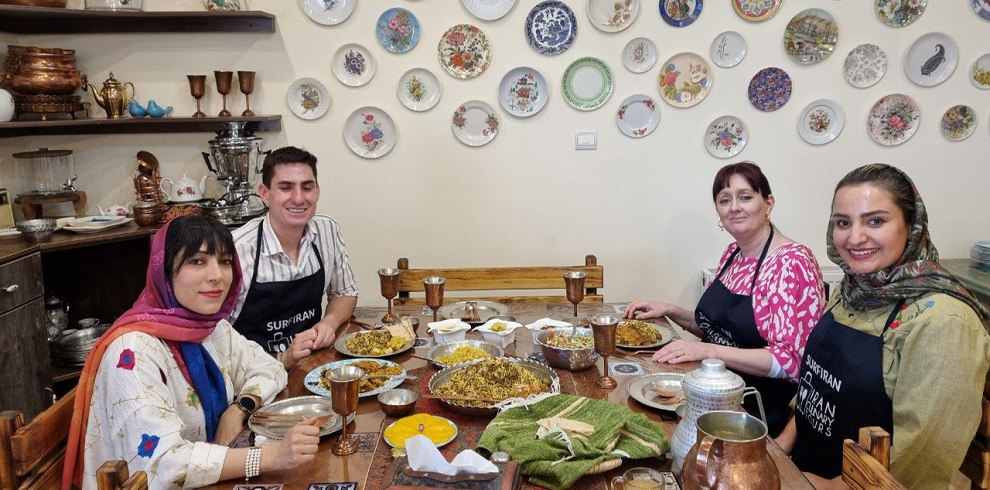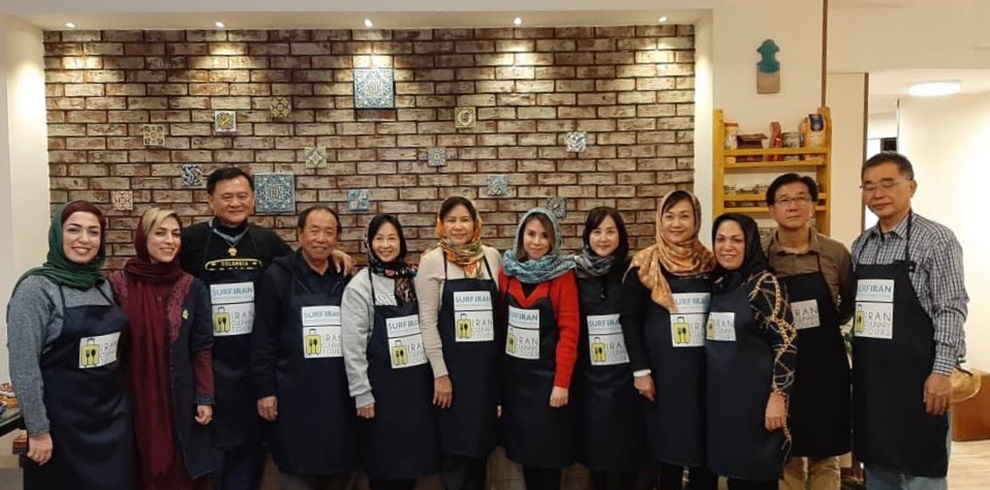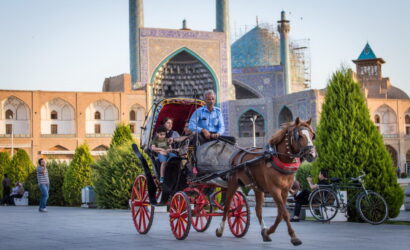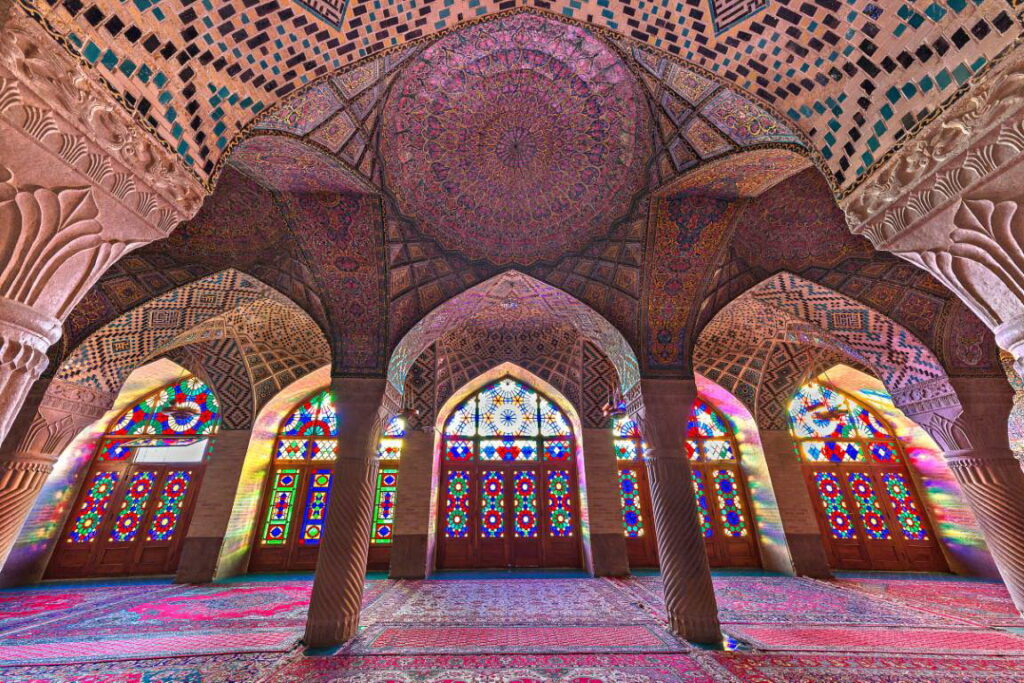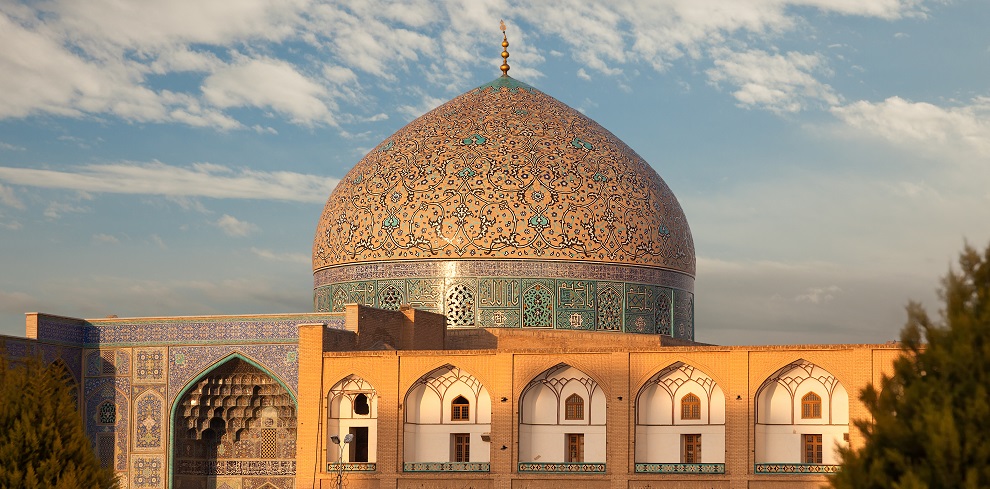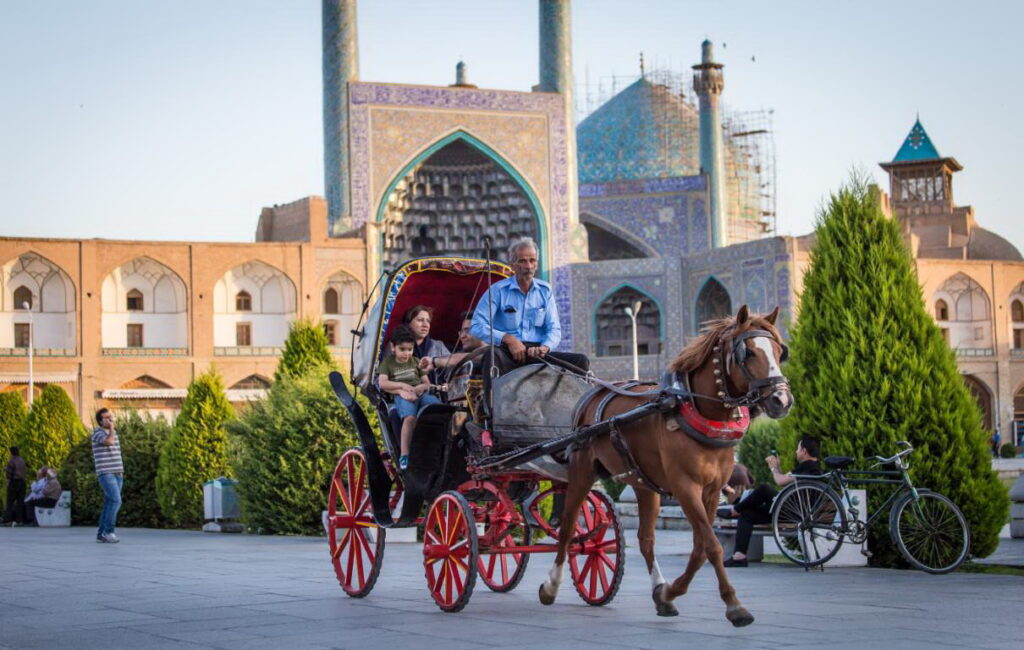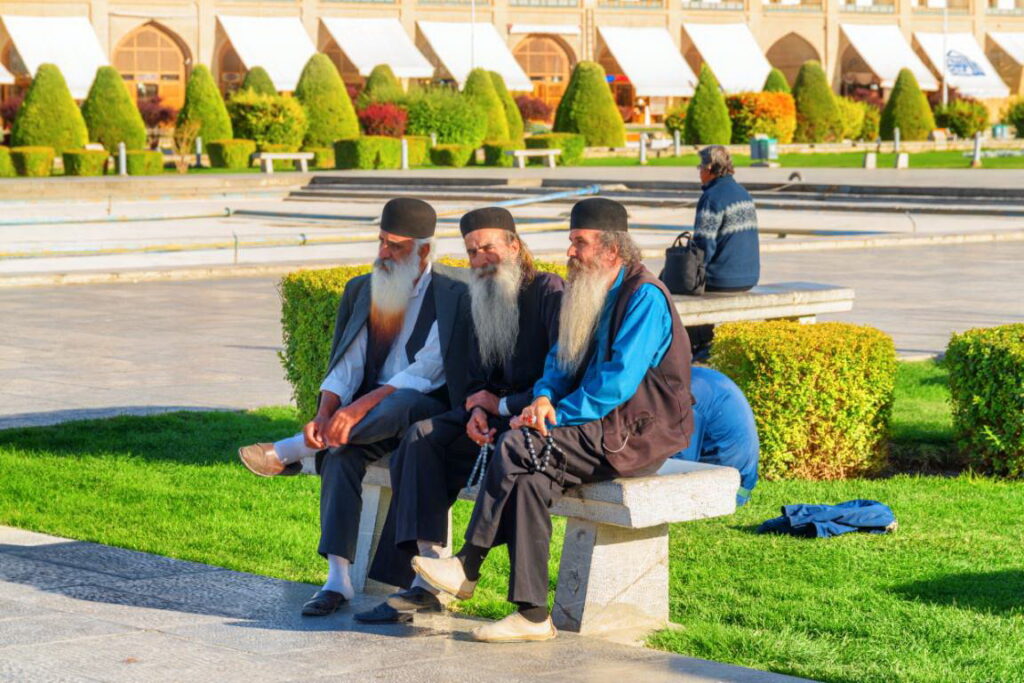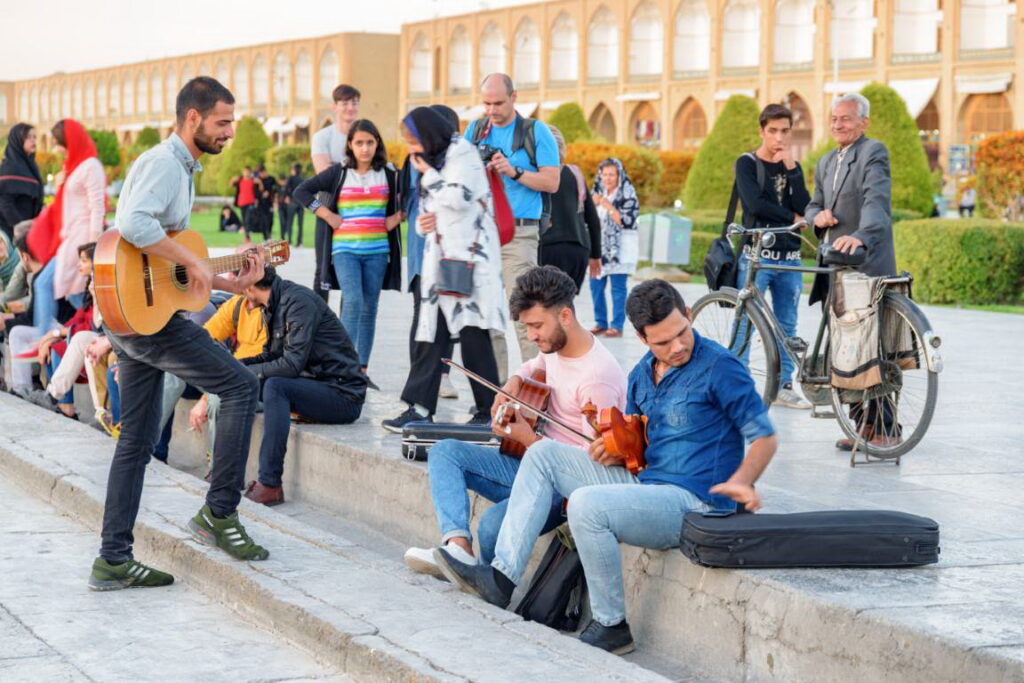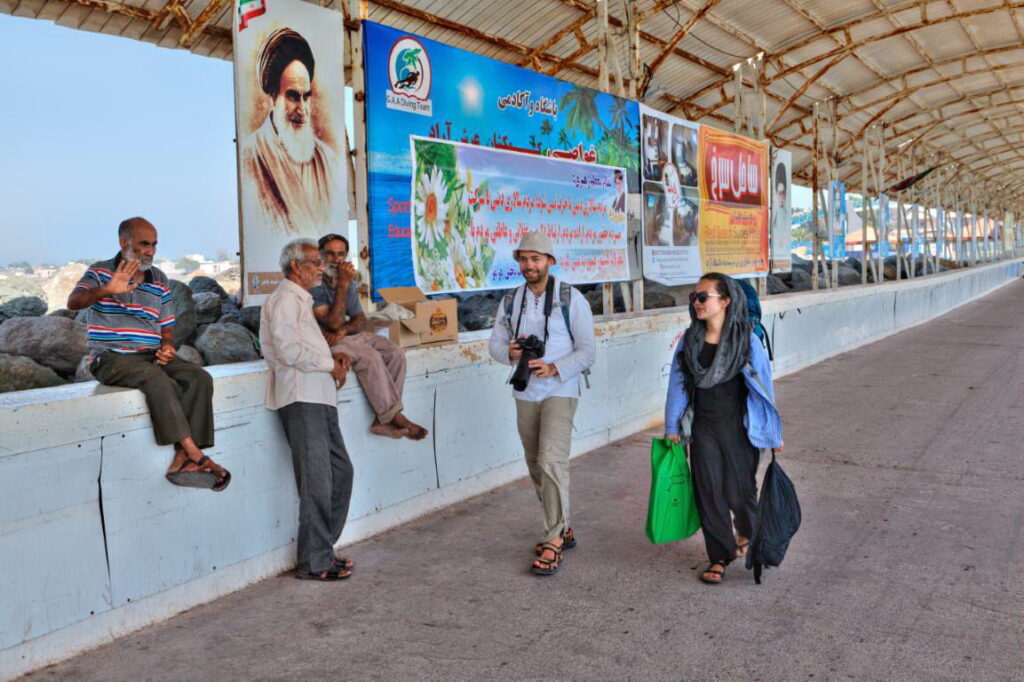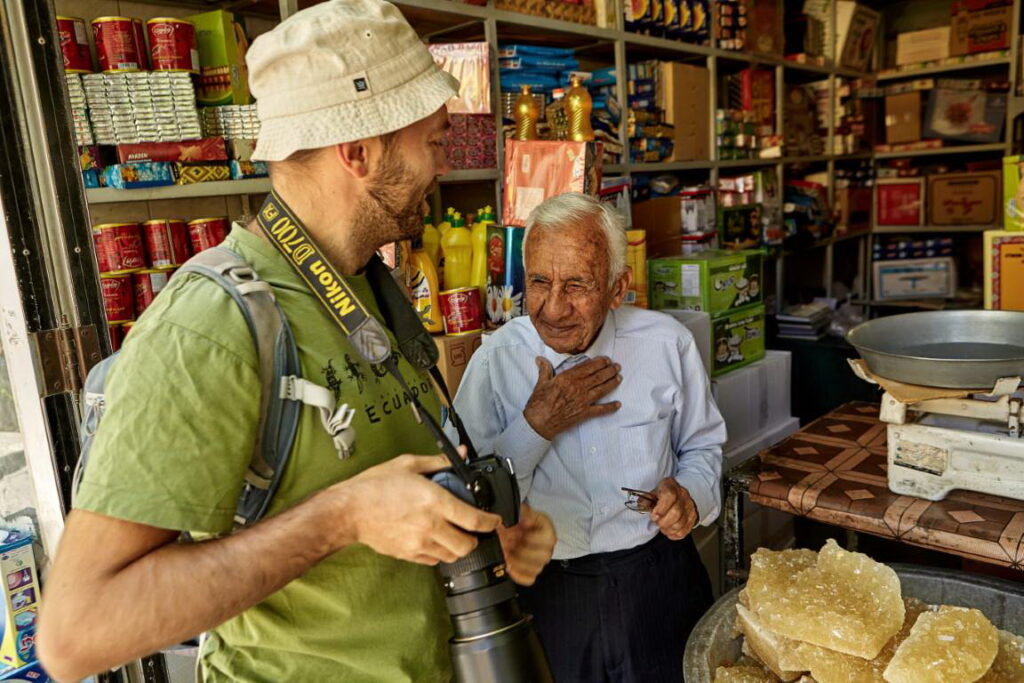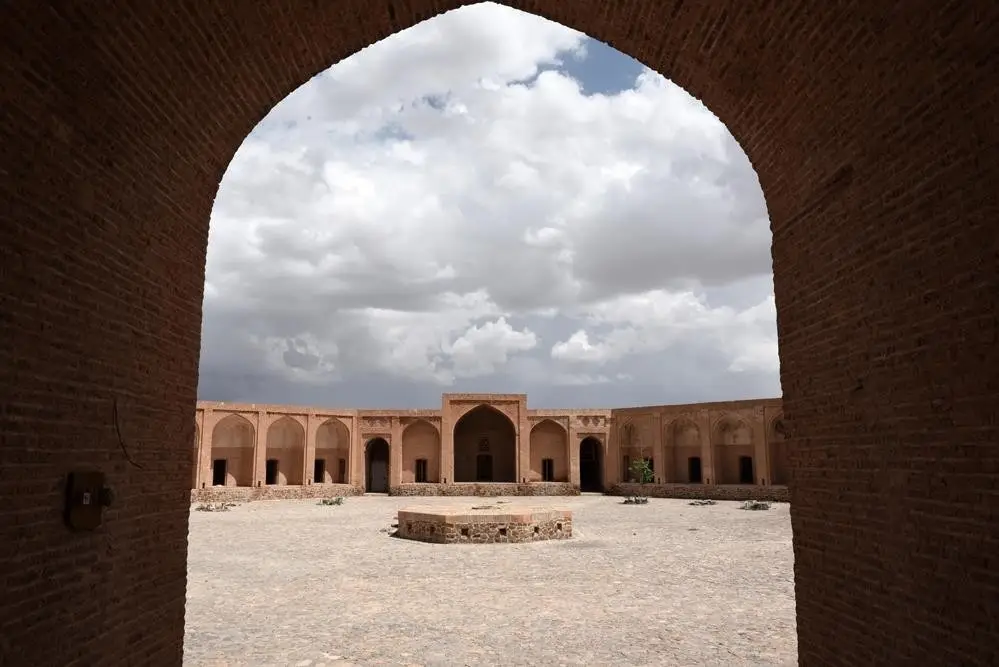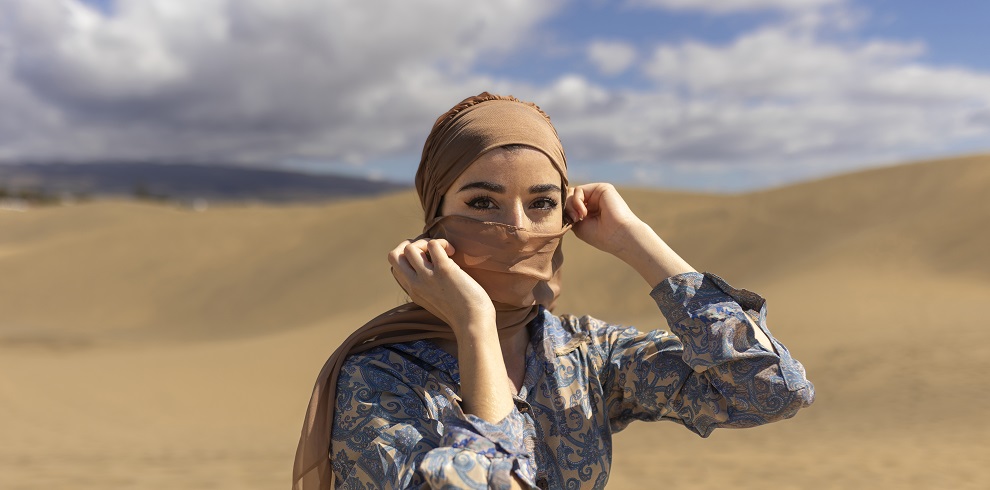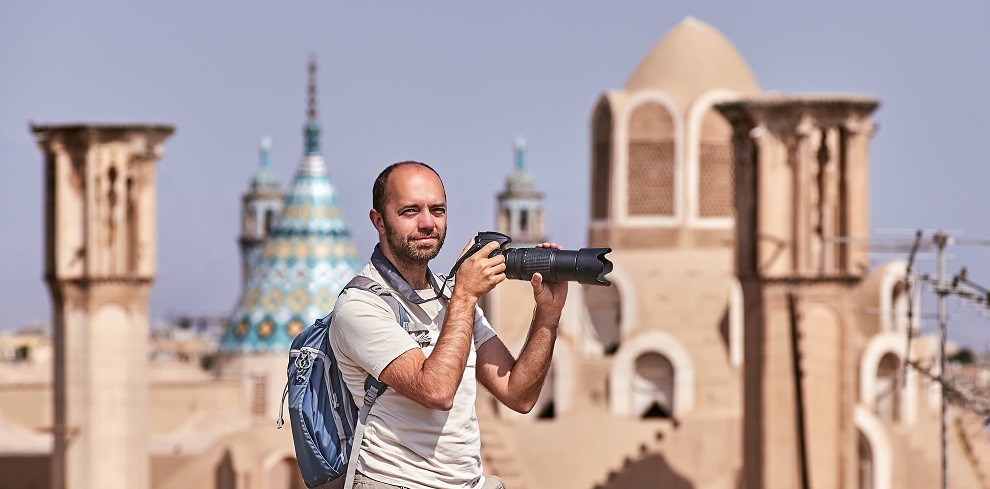Useful Tips
-
Tehran
-
Tehran
-
English-Speaking Guide
-
All year round
Overview
During the centuries, Iran has flourished through its extraordinary tangible and intangible heritage. Majestic palaces, ancient castles, awe-inspiring mosques, picturesque villages, and traditional foods and beverages display the vibrant blend of Persian cultures.
On this attractive journey, you will explore the modern landmarks of Tehran, indulge in the gastronomic province of Gilan (Rasht and Fouman), discover the historical city of Kashan, admire the breathtaking magnificence of art of Isfahan, and be impressed by the grandeur of the poetic city of Shiraz.
Your guide will accompany you to several local houses, where the tantalizing flavors of Persian cuisine originated. Delve into this culinary paradise, savoring authentic dishes and embracing the warmth and hospitality of the Iranian people.
with SURFIRAN, you witness the beauties of Iran revealed before your eyes. experience its people’s warmth, its culture’s richness, and the attraction of its historical wonders.
DURING THIS EXPEDITION, YOU WILL HAVE THE OPPORTUNITY TO:
- Discover various historical and culturally significant cities like Tehran, Fouman, Rasht, Kashan, Isfahan, Yazd, and Shiraz.
- Visit ten remarkable UNESCO World Heritage Sites, including Golestan Palace, Fin Garden, Yazd City, Dowlat Abad Garden, Pasargadae, Persepolis, Chehel Sotoun Palace, Naghsh-e Jahan Square, and Jame Mosque.
- Engage with local communities, with the chance to participate in a Persian Cooking Class hosted in a local home.
- Indulge in the exquisite flavors of Persian Cuisine, Delectable Sweets, and Desserts, and acquire genuine Iranian Souvenirs to cherish.
Travel Itinerary
After arriving at Imam Khomeini International Airport (IKA) in Tehran, our representative will meet and greet you at the airport. The local representative will transfer you to your hotel to rest.
Today we will go to Fouman, on our way we will have to stop at Roudbar, which is the center of Olive in Iran.
After that we will drive to Masouleh, a thousand-year-old village which is set in the foothills of Gilan, taking one back in time to the traditions of rural Iran and the simple agrarian life that used to dominate most of the country. It is also one of the best places to sample Iran’s vegetarian cuisine, most notably the dish Mirza Ghassemi, a regional specialty of smoky auberges’, burnt over hot coals and then gently fried with tender young garlic, plump tomatoes, and plenty of local olive oil.
After that will head north to Fouman City where we stay in a Tea Garden and will experience and learn about Tea Plantation, become familiar with different kinds of tea, see Beehive, and taste a special northern cookie called “Koloocheh”.
After breakfast, we will spend more time in the Garden. We can walk on a special walking trek and see the different parts of the garden.
Then, move to Ziba Kenar, another beautiful village in Gilan Province. There, we will spend hours with a Local Family, we do several activities such as fishing, gardening, shopping at the local wet market and finally cooking traditional food.
In the evening, we will back to Rasht.
Before leaving Gilan Province behind, we have some time to visit the Gilan Rural Heritage Museum, Gilan Rural Heritage Museum is an accurate depiction of the lifestyles, cultures, and traditions of the rural areas of Gilan Province in North of Iran. In this museum, we can see details about the lifestyle, work, housing, souvenirs, local foods, and everything else we need to know about life in the rural areas of northern Iran. Then, we will visit Saravan Forest Park, which is one of the oldest forest fields of Gilan, which for its various plant species is rare across the country and even the world.
Continue to Tehran.
This morning, we will take you to a World Heritage Site, the lavish Golestan Palace. Built during the Qajar Dynasty, which rose to power in the late 1700s, this fabulous walled complex is centered on a landscaped garden with tranquil pools. Then, we will walk around Tehran Traditional Bazaar, the second largest Traditional Bazaar in Iran after Tabriz.
Lunch will be served in one of the most famous restaurants in the bazaar from the 1990s called Muslim Restaurant.
We will spend our evening with a local family from Bushehr. Bushehr is a city in the south of Iran, they have unique people traditions, and their dress, music, food, and lifestyle are different from others. In their home, we will learn how to cook their food and also their special dessert called “Ranginak”.
Leaving Tehran behind, we’ll travel south to Kashan, a town originally famous for its Textiles, Rose Water and Ceramic Production.
Fin Garden (UNESCO World Heritage Site) is our first stop; a relaxing and visually impressive Persian garden with water channels all passing through a central pavilion. There is also the chance to buy some rose water, a local specialty, outside of the site.
Then, you will visit the Tabataei and Boroujerdi Traditional Houses. Two famous traditional houses of Iran were built by well-known Iranian architects about 130 years ago during the reign of the Qajar dynasty.
Our last visit to Kashann will be at the Sultan Amir Ahmad Bath. Because of its magnificent architecture and design, Iranian people call it the bride of bathes.
Our overland journey continues to the small town of Meybod, where our first impression might be its striking monochromatic architecture of desert brick. But set along an ancient trade route, Meybod also offers several fascinating sites to visit including its Narin Castle, Caravanserai, Ice-house, and Pigeon Tower.
Continue to Yazd.
Tonight’s dinner in a local restaurant offers a chance to experience daily Iranian life in a city that’s smaller than Tehran or Isfahan. The ambience is a bit more laid back and the residents may seem a bit more reserved. But, we’ll find them warm, friendly, and eager to meet tourists.
Yazd (UNESCO World Heritage City) is one of the oldest continuously inhabited towns of Iran. Its silhouette is punctuated by minarets and ingeniously designed wind towers that capture desert breezes to cool homes during the hot summer months. Yazd is also the center of Iran’s Zoroastrian community, which is where you’ll begin the day’s sightseeing.
At the Tower of Silence, we’ll learn about one of the traditions of this ancient pre-Islamic religion. Zoroastrians used to take the dead bodies there and didn’t bury them underground or burn them.
At the still-active Zoroastrian Fire Temple, we will see a flame that is said to have been burning for the past 1,500 years. It’s an important pilgrimage site for the faithful and here our expert guide will offer additional insight into one of the world’s oldest monotheistic religions.
In Amir Chakhmaq Square, we’ll see a very impressive Hussainiya– a congregation hall for Shia commemoration ceremonies. With three tiers of recessed alcoves, all perfectly proportioned, its facade is one of the city’s most photographed landmarks.
The next place to visit is the Jame Mosque of Yazd, built in 1324, where you can gaze upon the tallest minarets in the country. Then, strolling in the Fahadan District could be one of the unforgettable moments of our journey in Iran.
Among the many other historic sites to be seen in Yazd, Dowlat Abad Garden (UNESCO World Heritage Site) standing by the garden’s long reflecting pool, we’ll be shaded by old cypress trees. This garden has the tallest adobe wind-catcher in the world.
Today, we have a full day of driving to reach our destination of Shiraz.
Over our drive, we will pass through Abarkooh where we will visit the world’s second oldest tree called the Abarkooh Cypress, its age is estimated over 4000 years.
Next, we will visit Pasargadae, a UNESCO World Heritage Site, the Tomb of Cyrus the Great, and the former capital of the Achaemenid Empire. We will spend some time exploring the site and though not as striking as Persepolis, there is a great viewpoint where we can look over the site and the surrounding area.
For lunch, we will visit the Qashqai Nomads, near Shiraz. You will be deeply in touch with some nomadic families from one of the handful of remaining nomad tribes in the world. Over there, we will have our time to be acquainted with the nomadic lifestyle and witness their daily routine of shepherding, collecting wood, baking bread, milking sheep and goats, and preparing fire for making bread.
There is a historical monument, called the Quran Gate. Upon our arrival, we will have a short stop to take a photo of the gate.
After breakfast, we will visit Nasir-al-Mulk Mosque (Pink Mosque). Its interior reveals a magnificent masterpiece of design with stunning colors. This is a space where light and worship intertwine. Continue our exploration in Shiraz at the beautiful orange-scented Narenjestan-e Qavam Garden, laid out in the 19th century during the Qajar Dynasty.
Then, we will have a look at Karim Khan Citadel from outside which was built during the Zand Dynasty and reach to Shiraz Bazaar. Shiraz is famous for its herbs and kinds of traditional sweets which we can find in the bazaar. there is a famous small caravanserai (Robat) called Saray-e Moshir.
For our afternoon visit, we will head to the Tomb of Hafez. Hafez is one of the greatest poets in the world. His tomb is located in a beautiful garden and visiting that area gives a special feeling to its visitors.
At the end, we will visit a Local Family in Shiraz to learn how hospitable they are and learn how to cook their traditional dish.
After breakfast, we will drive to the Legendary City of Persepolis (UNESCO World Heritage Site), the former capital of Darius the Great which was founded in 518 BC. There was no more impressive construction in the ancient world than Persepolis, except perhaps the Karnak in Egypt. From here, we will drive a couple of miles away to the Naqsh-e-Rustam (Necropolis). Some tombs have been carved into the side of a cliff, the site is extraordinary in its magnitude and sheer ambition and does not disappoint even after the impressive Persepolis.
Our overland journey continues in Isfahan. As the 17th-century capital of the Safavid Empire, Isfahan was one of the world’s greatest cities– architecturally striking, wealthy beyond imagine, and politically powerful with Europeans, Ottomans, Indians, and Chinese coming to its court– the heart of a vast Persian Empire that stretched from the Euphrates River in present-day Iraq to the Oxus River in Afghanistan. Indeed, its grandeur inspired the rhyming proverb, Isfahan is the Nesf-e Jahan (Isfahan is half of the World).
Our exploration starts in the Chehel Sotun Palace (UNESCO World Heritage Site). Set in a landscaped and forested park in front of a tranquil reflecting pool, this graceful pavilion was built by Shah Abbas II for entertainment and court receptions. Entering through a portico with twenty slender wooden columns, you will discover soaring halls embellished with frescoes, paintings, and mosaics; the Hall of Mirrors is especially breathtaking!
Next up is Naghsh-e Jahan Square (UNESCO World Heritage Site). This 17th-century site is one of the largest public spaces in the world. Here in the square, you’ll visit the 17th-century Shah Mosque, revered as a masterpiece of Islamic architecture and easily recognized by its magnificent tile-work and soaring cupola and minarets.
You will also visit Sheikh Lotfollah Mosque, also known as the Ladies Mosque, as it was built for the Shah's harem, renowned for its brightly colored domed ceiling, where the light creates the image of a peacock. In the Ali Qapu Palace, you’ll marvel at its beautiful music rooms and the balconies where Safavid kings would sit to enjoy the polo matches unfolding in the square below.
You’ll end your exploration of the square by visiting the Qeisarieh Bazaar. With hundreds of local vendors that specialize in traditional arts and crafts, it’s a wonderful place to shop for pottery, enamel, jewelry, and delicately inlaid board games.
In addition, we will taste different Isfahan’s sweets like Poolaki, (which is a soft and transparent confection in Iran made with rose water, starch, sugar and water) and Gaz.
Visiting the two most famous bridges of Isfahan, the 33-Pol and Khajoo Bridge could be among the best experiences of meeting local people in Isfahan.
Continue our exploration in Isfahan at another UNESCO World Heritage Site. Simple at first glance but wondrous in its rich detail and bold design, the Jamé Mosque is another masterpiece of Iranian architecture, covering nearly 5 acres in the heart of this historical city. This is one of the oldest congregational mosques in the country, and its construction and embellishment over the past twelve centuries illustrate several important periods in Islamic architecture.
In the city’s Armenian quarter, you will delve more deeply into the region’s complex history as you will visit several churches including the 17th-century Vank Cathedral with its lavishly decorated interior and unique blend of Islamic and European architectural elements.
For lunch, we will have Aash Reshteh, which is a healthy soup packed with legumes, fresh herbs, and noodles and is often served with a generous drizzle of Kashk, a tasty flavored fermented that tastes somewhere in between parmesan and goat’s cheese.
In the afternoon we will drive back to Tehran and have a rest at the hotel.
SURFIRAN’s representative will transfer us to Imam Khomeini International Airport (IKA) according to our flight time.
Inclusions and Exclusions
What's Included
- Visa Authorization Code
- Accommodation (B&B)
- All Transfers and Transportations
- Certified English-speaking Tour Guide
- 1 Bottle of Water Per Day Per Person
What's Excluded
- International Air ticket
- Visa Fee
- Insurance
- Meals
- Entrance Fees
- Tip
